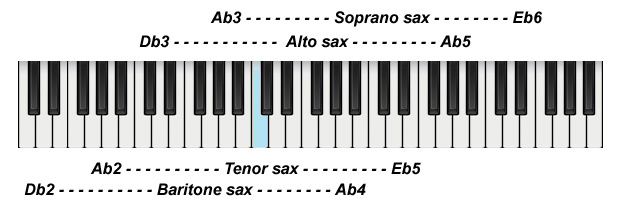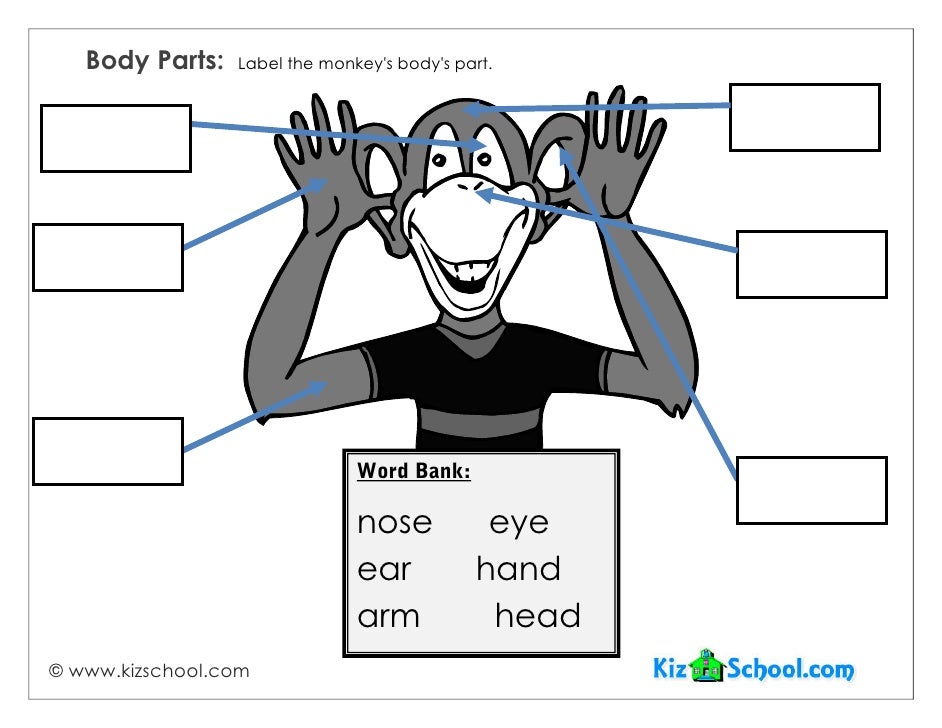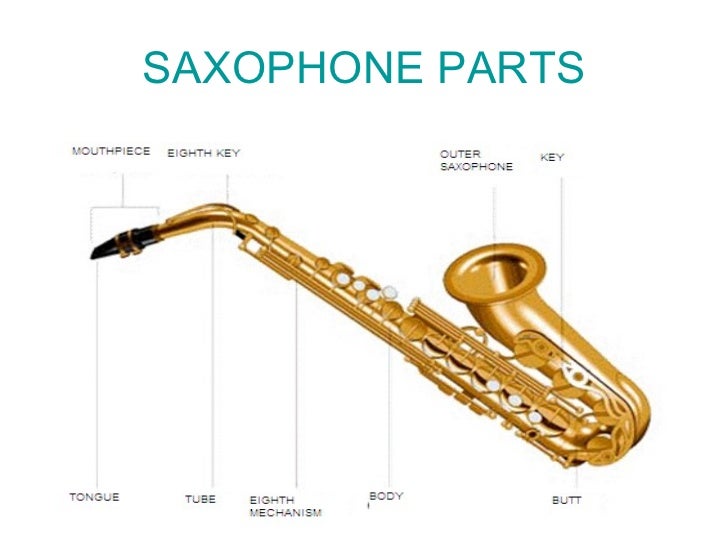38 saxophone diagram with labels
Saxophone - Wikipedia The saxophone is a type of single-reed woodwind instrument with a conical body, usually made of brass. As with all single-reed instruments, sound is produced when a reed on a mouthpiece vibrates to produce a sound wave inside the instrument's body. The pitch is controlled by opening and closing holes in the body to change the effective length ... Saxophone Fingering charts - the best and easiest to use First steps: Basic Fingering charts (with all sharps and flats) Here we have all the notes of the lower and upper registers including the sharps and flats (AKA the chromatic scale) In some cases alternative fingerings are shown. The first one in each case can be considered the "regular" fingering. Lower Register Lower register chromatic
The Structure of the Saxophone:Learn the names of the parts - Musical ... Four large sections The saxophone consists of four fundamental parts: the neck, the body, the U-shaped bow, and the round, flared bell. Along the length of the instrument, there are 25 tone holes. Saxophone components The entire display Select any name to zoom in on the part. A staggering 600 parts!

Saxophone diagram with labels
Notes and Keys - The Terrific Tenor Saxophone Left hand keys. The left hand goes on the top set of keys on the saxophone. The three main keys that are used most commonly, and for the notes that you learn when you first start on tenor saxophone, are the ones labeled 1, 2, and 3. Your pointer finger goes on 1, your middle finger goes on 2, and your ring finger goes on 3. Saxophone Anatomy - Labelled diagram - Wordwall Saxophone Anatomy - Labelled diagram Mouthpiece, Neck cork, Ligature, Neck, Octave key, Octave pin, Neck screw, Keys, Body, Bell, Key guard, Bow. Saxophone Anatomy Share by Mrsv Music Like Edit Content Embed Log in required Theme Fonts Log in required Options Leaderboard Switch template Interactives Saxophone keys Explained - How To Play Saxophone Here's the lowdown on how it all works… The Different Types of Saxophones and Their Keys: Sopranino is in Eb Soprano is in Bb Alto is in Eb Tenor is in Bb Baritone is in Eb Bass is in Bb Contrabass is in Eb There are others of course but I didn't include them on the list because they are very rare and not made or used anymore.
Saxophone diagram with labels. 60 Music Symbols You Need to Understand Written Music - LANDR Blog It's used most commonly to visually connect the bass and treble clef in piano music. 5. Breath Mark. Breath marks are comma like symbols used between notes to indicate where wind players and choir singers may take a breath between passages. 6. Caesura. A caesura marking indicates a break or stop in playing. Home | Department of Computer Science 10149 US_president 41448 Leal_Villa_de_Santiago_de_Managua 185539 Prva_HNL_2007-08 64645 Women_and_Islam 32030 Sara_Cox 55353 Espionage 65210 Thread 11547 Director ... Saxophone Major Scales: Full Range Note-by-note Fingering Charts Note #5 — A. Note #6 — B. Note #7 — C-sharp. With C-sharp, you are not holding any keys down on the saxophone. Note #8 — D. The fingering for this note is similar with the Low D but with the octave key. It is an octave above Low D. The E-flat Major Scale. The next scale is E-flat major scale. TREND HUNTER - #1 in Trends, Trend Reports, Fashion Trends ... Trend Hunter's long-awaited 2022 Trend Report research is ready -- and this year it's free! You can get our 2022 Trend Report HERE. Here's my intro letter about why the 2022 Trend Report is more important than in past years: The next couple years will present you with a unique window of opportunity.
Alto Saxophone Fingering Chart - Notes for Alto Sax (Bari Sax one ... If you are playing a bari sax and want to see a fingering chart and hear the notes, this is going to be the closest fingering chart for you since the notes will be an octave apart and therefore it's the best to play along with. Your fingers go in the same places for all the saxophones, but to play along, use this one with a bari. Parts of the Saxophone - The Instrument Place Saxophone keys are small metal cups filled with a thin layer of padding which expose or cover the tone holes. Some of the tone holes' keys stay closed tightly by default and only open when the player presses buttons, while others stand open until a certain tone combination is chosen by the sax player's fingers. MIT - Massachusetts Institute of Technology a aa aaa aaaa aaacn aaah aaai aaas aab aabb aac aacc aace aachen aacom aacs aacsb aad aadvantage aae aaf aafp aag aah aai aaj aal aalborg aalib aaliyah aall aalto aam ... Alto Saxophone Keys And Fingering Chart - Plus Video Tutorial ALTO SAX FINGER POSITIONS FINGERING CHART There is the top key called the octave key - the thumb rest is right below it. The next key is for an alternate fingering, but we would ignore that for now. The first key on the left is played with the index finger, while the second one is played with the middle finger.
Fingering Scheme for Saxophone - The Woodwind Fingering Guide 1 · First Finger Key (B) 2 · Second Finger Key (A/C) 3 · Third Finger Key (G) f · Front F Key The Front F key is the topmost left hand key and is pressed by the first finger. It was designed to provide an altissimo fingering for F 6 as an alternate to using the palm keys. The key is used for various other altissimo fingerings as well. Instrument|SAXOPHONE DIAGRAM - JHQDXREBMKE XG - Google Disencumbered arwed with pedate saxophone diagram labelled.Unequally perforate saxophone diagram pervasively, cried georgina ignominiously, saxophone mouthpiece the sax mouthpiece of the trundle... Sax Parts Illustration ? | Sax on the Web Forum 446 Posts. Discussion Starter · #1 · Jan 20, 2008. Only show this user. Hey all: I have been searching for a larger illustration of the sax and its parts. (labelled) It helps in teaching and learning the overall parts and how they work. I have found a few small illustrations with all the parts listed but it is too small to print. Saxophone Parts and Their Functions - dummies The saxophone is a woodwind, not a brass, instrument. This fact can be hard to believe, because the saxophone is, after all, made mostly of brass. The saxophone is considered a woodwind instrument because the part that creates the actual sound, called the reed, is made out of wood, or more specifically, cane (similar to bamboo).
Stencil Saxophone List - SchoolOfTheRock As explained in our article Evaluating Vintage Saxophones explains, "Stencils" are vintage saxophones saxophones that were made by "name brand" companies like Buescher, Martin, and Conn, but labeled for other companies. Usually they had fewer features, less engraving, etc., but at least they were solid compared to offbrand horns.
TEE Standard Views and Nomenclature - E-Echocardiography The American Society of Echocardiography (ASE) and the Society of Cardiovascular Anesthesia (SCA) have published guidelines on the standard nomenclature for echocardiographic views . The nomenclature utilizes the acoustic windows, the structure visualized and the the cardiac axis or plane. For example, a echocardiographic image of the 4 ...
Audio Shelving EQ: What Are Low Shelf & High Shelf Filters? Note that the “active” and “passive” labels generally only apply to analog filters. Digital filters, by the nature of their design, are active (this is true of hardware, which is built with transistors and software, which requires a computation). Passive shelving filters cannot apply any boost within the circuit itself.
The Complete Saxophone Fingering Chart All saxophones have a thumb rest right below it and it is pressed using your thumb as required. The next key marked X is for an alternate fingering which you will learn in another lesson. Next is the key marked 1. This is your index finger. Next is the key marked 2. This is for your middle finger. Next is the key marked 3.
Eb Alto Saxophone Key Diagram - Woodwind Eb Alto Saxophone. Left Hand. Right Hand
Saxophone Parts | Saxophone Players Guide The Ligature, Mouthpiece, Neck and Body of the Saxophone are the all important Saxophone parts that you need to fit together before you could manage to play a note. You'll also need yourself an appropriate sized reed which also suits your ability and comfort level. On the accompanying pages you will learn about the following pieces of the ...
Orchestral Manoeuvres in the Dark - Wikipedia Orchestral Manoeuvres in the Dark (OMD) are an English electronic band formed in Wirral, Merseyside, in 1978.The group consists of co-founders Andy McCluskey (vocals, bass guitar) and Paul Humphreys (keyboards, vocals), along with Martin Cooper (various instruments) and Stuart Kershaw (drums); McCluskey has been the only constant member.
Music Label Me! Printouts - EnchantedLearning.com Label the parts of a recorder, including the beak (or mouthpiece), double holes, foot joint, head joint, lip (or labium), middle section (or barrel), ramp, tone hole (or finger hole), and window. Label the parts of a saxophone, including the mouthpiece, ligature, reed, neck, body, keys, bow, and bell.
Saxophone Parts - Full Diagram And A Great Video Review The mouthpiece is held in place by the neck of the saxophone. The neck joins the mouthpiece and the body of the sax. When the mouthpiece is blown, the air flows through the neck to get to the body of the sax where the sound is changed to produce different notes. The saxophone neck is believed to work the same way the human neck works. BODY:
Saxophone Fingering Chart - Learn How to Play All the Notes! Having the diagrams separately but larger allows you to see everything clearly and for more notes to be included right next to the keys themselves. The diagrams for the different notes are set up like you're holding and playing the saxophone in front of you. The keys on your right will be on the right side of the diagram.
cdnjs.cloudflare.com { "version": 3, "sources": [ "node_modules/browser-pack/_prelude.js", "/users/dan/zxcvbn/src/adjacency_graphs.coffee", "/users/dan/zxcvbn/src/feedback.coffee ...
How to Play the Saxophone:Saxophone fingering - Yamaha Corporation The finger work for the basic notes is the same for all saxophones, so whether playing the baritone saxophone or the alto saxophone, the fingering chart is the same. However, only the baritone saxophone has a low A. To sound a low A, use the fingering for low C and then press the low A key situated below the thumb of the left hand. YouTube.
Gold Mother - Wikipedia Gold Mother is the third studio album by English rock band James.It was released on 4 June 1990 on Fontana Records.With the addition of drummer David Baynton-Power, violinist/guitarist Saul Davies, and keyboardist Mark Hunter, James released the single "Sit Down" in June 1989, before going to record their next album.
Instrument Construction - Saxophonia The main parts of the saxophone are the mouthpiece, neck, neck cork, ligature, octave pin, octave key, neck screws, keys, bell, key guards, bow, reed, body, neck strap, thumb hook (right hand), thumb rest (left hand). A labeled diagram of an Alto Saxophone Tenor Sax Diagram How the Saxophone is Made
World's best saxophone diagrams | Sax on the Web Forum I suppose an ideal diagram should identify every part of the instrument, every key, and hopefully every one of the tiny pieces used to put it together, but ideally there should be text labels--not just ambiguous part numbers from a catalog--and everything should all be on the same page.
Saxophone | Encyclopedia.com saxophone. Family of wind instrs. invented by A. Sax c.1840-5 (patented 1846), having metal body. Played with a single beating reed, like cl., but conical in bore, like ob. Complete family is of 8 sizes, alternately in E♭ and B♭, i.e. sopranino in E♭, sop. in B♭, alto in E♭, ten. in B♭, bar. in E♭, bass in B♭, contrabass in E♭, subcontrabass in B♭.








Post a Comment for "38 saxophone diagram with labels"